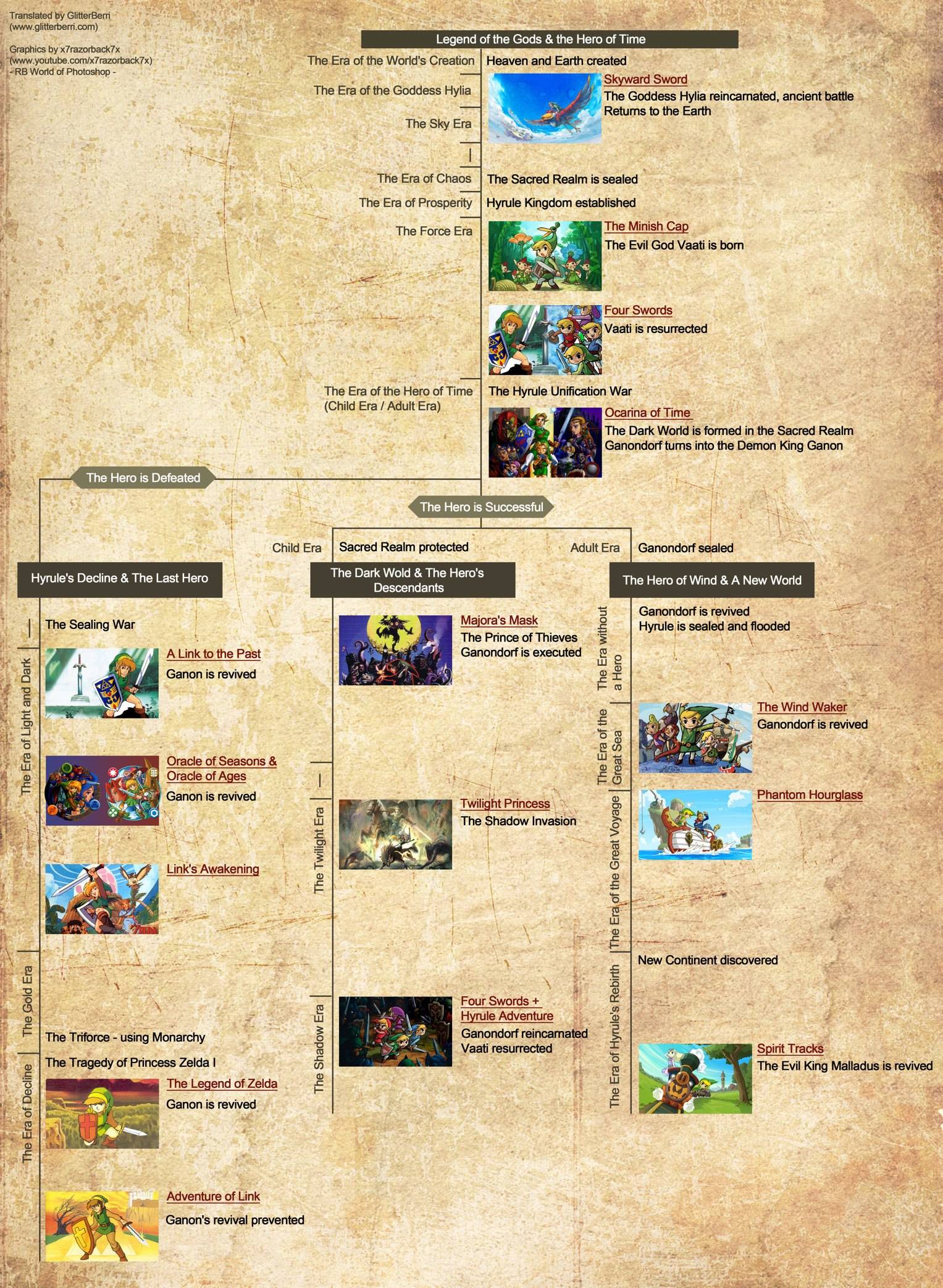I think this question is too broad, because there are so many games.
I'm suspecting that this answer focuses on games other than the ones that Finian was intending to focus on (when creating the question). However, at the time this answer was written, the question was pretty broad (referring to "each LoZ game"). If Finian wishes something more specific, I suggest clarifying (or asking a separate question).
I'll start the answer by looking at just two of the games: The hammer in Zelda 2 is in a cave next to a boulder. The cave is meant to represent Death Mountain from Quest 1 in Zelda 1; the nearby (hammerable, for a secret) bolder is meant to be the other section of Spectacle Rock. Image of Zelda 1 overworld compared to section of Zelda 2 shows a graveyard to the Southwest of Spectacle Rock, a (rejuvenated, and now green) forest between that and a thin river going from the Level 4 & Level 1 lakes to the southern sea, part of a map. Official statements have indicated that this small section of Zelda 2 is meant to correspond to Zelda 1, and therefore Zelda 2's world is much larger than Zelda 1's. So, the canon answer here is that yes, these worlds are related; they are the same world.
Another example from the series: It is my understanding that "The Legend of Zelda: A Link Between Worlds" involves the map from A Link To The Past. I haven't yet gotten around to playing it, so I'm not sure just how authentic it is.
Obviously, the Master Quest re-used much content from the earlier Ocarina of Time release.
Obviously, Zelda 3's Light World was intended to be a parallel universe to Zelda 3's "Golden Land", more commonly known as the "Dark World" that Ganon created.
In Zelda 3 (A Link To The Past), Death Mountain contains Spectacle Rock (shown as location #4 from this map of Zelda 3's Death Mountain.
Everything stated above is all official similarities, well-backed by official writings (storylines from manuals, or Strategy Guides, or old Nintendo Power magazine issues) and, therefore, can safely be considered canon.
Zelda 3 also has the Lost Woods in the Western part of the world. The land of the Zoras involves a waterfall to the right. With so many similarities, it seems like this was also meant to represent the same area. Furthermore, Hyrule Castle's has an Eastern bridge, and water heading much further South (and East), which is rather similar to Zelda 1's Level 1. It is clear that the creators felt free to use lots of flexibility, and they focused more on making a fun map than just trying to precisely re-create the past. However, there are so many similarities that I think it feels rather likely that Zelda 1's map was used as an early basic template.
It is entirely conceivable that all three of the first games were intended to be considered to be part of the same universe. Actually, even though Zelda 4 (Link's Awakening, for Gameboy) was supposed to be on Koholint Island (and, therefore, is the first game that wasn't meant to be in Hyrule), Zelda 4's map seems to have some layout quite similar to Zelda 3's layout. Since Zelda 4 was supposedly a dream, and dreams often take elements from wakened life, it is entirely conceivable that Koholint Island is a dream's modification of Hyrule.

